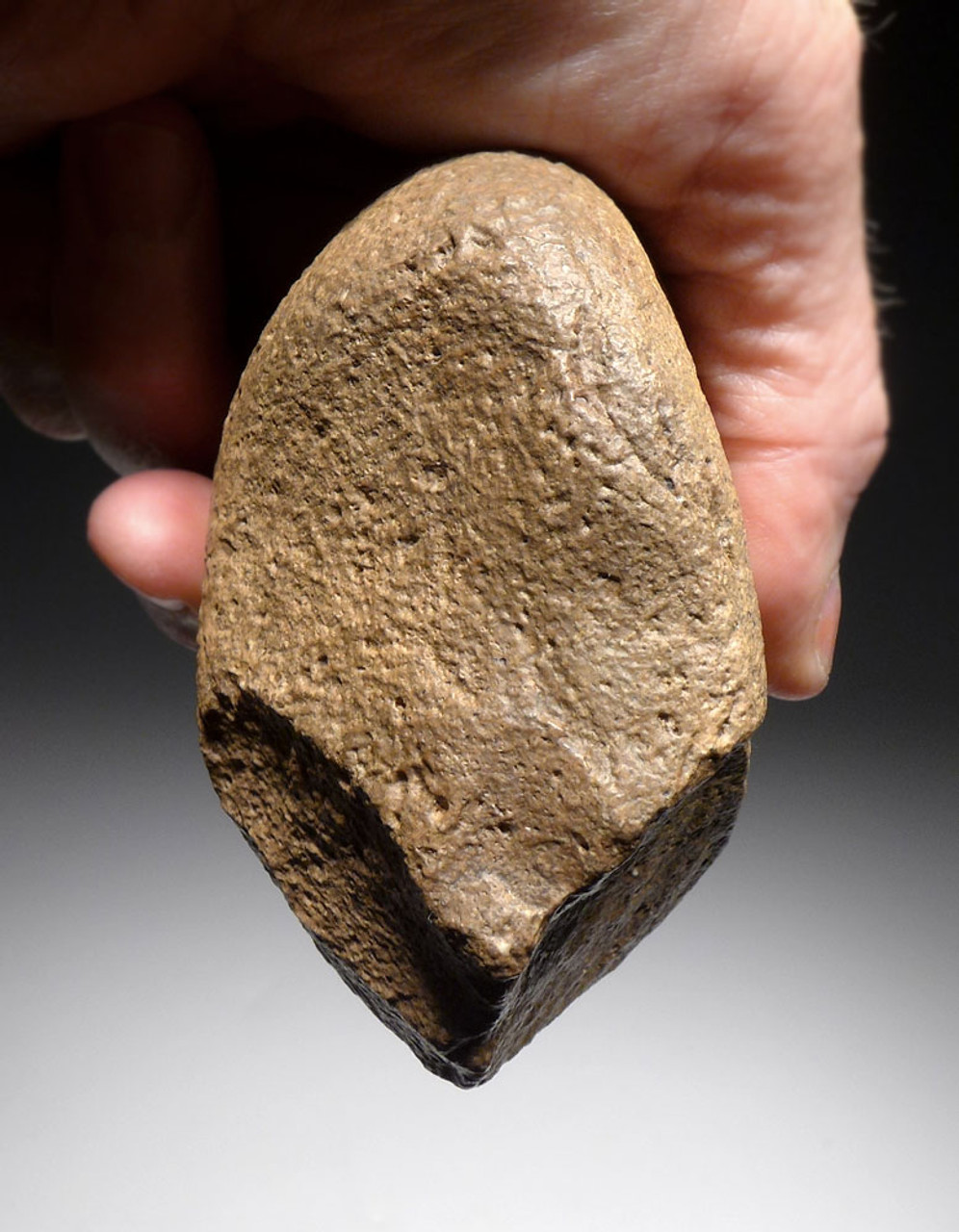Product Description
This is a classic OLDOWAN PEBBLE CHOPPER AXE and is a perfect candidate for demonstrating the earliest primary human stone tool of the Oldowan Tradition of Africa's Lower Paleolithic Period. It is made from basalt with a natural "desert varnish", a sheen from millennia of wind exposure in the desert. The minute crevices of the surface of the stone show no modern crushing or flaking and are filled with desert sediment testifying to its authenticity. The chopping edge is complete and undamaged as made with no modern handling damage. It shows a chisel end made by several opposing strikes - features ONLY seen in human-made tools versus stones broken in nature. The grip is perfect and the round, natural outside makes for a very comfortable grip. Workmanship and form is TRULY MUSEUM QUALITY.
This pebble axe could have been used to chop wood or break open the bones of hunted game to extract the highly nourishing marrow. The natural rounded cobble shape on the proximal end, makes for a very comfortable grip. Workmanship is superb and this specimen would make an ideal reference example of exactly what an Oldowan Pebble Chopper Axe should look like.
African pebble tools are not common on the market compared to their much later Acheulian relatives. This specimen is part of a very limited collection we acquired. African pebble tools were never commercially collected and rarely available for public acquisition. This offering poses a rare opportunity to own an AUTHENTIC example of the first known tool type made by humans - a window into the mind and design thought process of our earliest ancestors.
No one can doubt the importance that pebble tools hold in the history of human development. Their very emergence in Africa nearly two million years ago allowed the earliest humans to butcher animals for their meat - the needed nourishment that allowed humans to survive and flourish to one day populate and rule the earth.
SEE AND LEARN MORE ABOUT OLDOWAN PEBBLE TOOLS
HISTORY
Oldowan pebble tools are THE FIRST recognized tools invented by the earliest of primitive humans from Africa. These tools are seldom seen in private collections or public exhibits. Oldowan sites exist in numerous regions of the continent but it takes a very knowledgeable collector to be able to weed out all the naturally-occurring rocks that litter the ground from an actual pebble tool specimen. As the origin of humanity and as the earliest of tool technologies, this African Oldowan specimen poses a very important potential addition to any advanced collection of Paleolithic artifacts. It was made by the African Homo erectus known as Homo ergaster.
 US DOLLAR
US DOLLAR
 EURO
EURO
 AUSTRALIAN DOLLAR
AUSTRALIAN DOLLAR
 CANADIAN DOLLAR
CANADIAN DOLLAR
 POUND STERLING
POUND STERLING


















